When: 29-30 May 2017
Who: Jerome and I
My intricate plan to visit all the castles in south Wales during the first May Bank Holiday weekend crashed and burned. It turned out that spending two whole days in the car wasn’t Jerome’s idea of a perfect getaway. Strange… As a result I had to come up with another solution that would keep my lovely boyfriend sweet. Compromise seemed to be the key; after all it IS the best friend of a good relationship. Whilst this is straightforward enough in theory, how does one satisfy two completely different needs during one weekend in practice? How to combine my sightseeing hunger with Jerome’s need to train for a mountain marathon? The answer happened to be at my fingertips! A quick Google search revealed that our neighbouring Norfolk county is not only rich in castles, that I wanted to visit so much, but also historic abbeys and priories. Yay! I didn’t have to think twice to chose it as our destination. All of the interesting places that I swiftly put on the map were not more than 2 hours away from Cambridge – we could even make it back home for dinner without spending any money on overnight accommodation. Perfect! Ok, I was sorted. What about Jerome? To keep him happy we had to incorporate two requirements: hill walking and little driving. Great, where is this Arcadia? Everyone knows that Cambridgeshire is as flat as a pancake. As much as it’s perfect for cycling, it is definitely not a good place for hill walking. What to do, I pondered? A moment to think and a second destination was chosen – the Peak District! The closest entrance to this National Park is only 2 hours drive from Cambridge. Compromise, what a lovely word…
Norfolk
The benefit of having interesting places nearby is that there’s no need to get out of bed early in the morning. And so we didn’t. Instead, we treated ourselves with a big breakfast to make sure that we had enough energy for an eventful day. Remember children (and everyone else), breakfast is the most important meal of the day! Once fed, we hit the road.
WEETING CASTLE
Am I the only one that imagines a castle as a building of an intimidating size decorated with towers? I’m asking because when we got to our first destination I became slightly confused. Why is Weeting Castle, that is in fact an example of 12th century manor house, called a “castle”? What exactly is it that a “castle” refers to? The questions started piling up but luckily Wikipedia lent me a helping hand: “A castle (from Latin: castellum) is a type of fortified structure built in Europe and the Middle East during the Middle Ages by European nobility. Scholars debate the scope of the word castle, but usually consider it to be the private fortified residence of a lord or noble”. Weeting Castle has never been fortified so that description doesn’t entirely add up but it was indeed a residence of a powerful and wealthy family. What’s more, the “usage of the term has varied over time and has been applied to structures as diverse as hill forts and country houses.” So there we go. Not only princesses used to live in castles. There is still a chance for me! Weeting Castle maybe doesn’t overwhelm with its enormous size but it does impress. Especially when you saunter around the ruins and imagine who used to live there and how the live must have been like. When looking at all the remnants of the building, it is hard to believe that once upon a time it was a “great house” serving its household for nearly 900 years. All that has been left now are few walls decorated with (or built using) flint. I probably wouldn’t mention this stone if not for the fact that flint became (unexpectedly) a main theme of our trip and will be brought up in this post few more times.
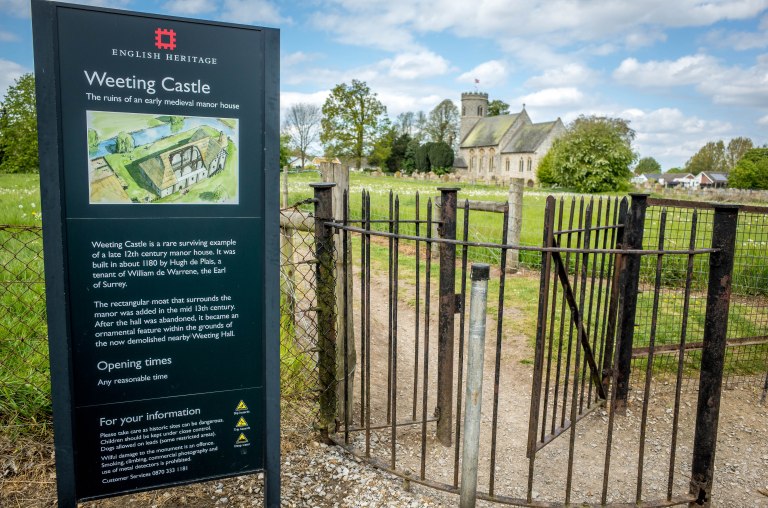
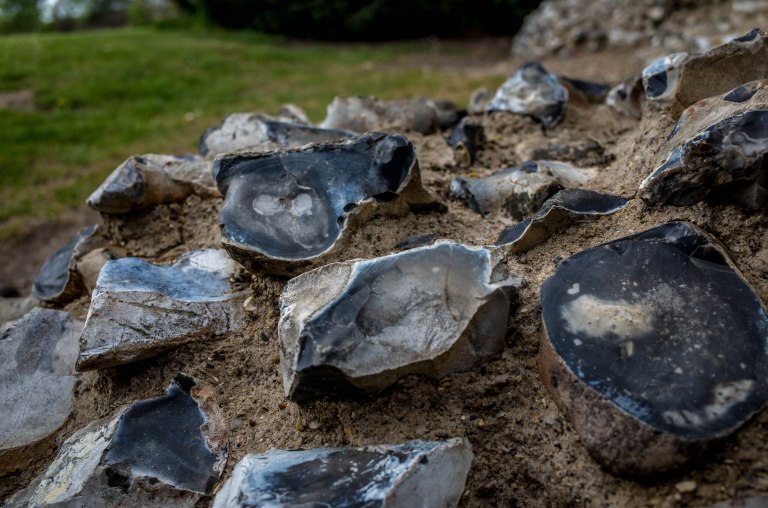
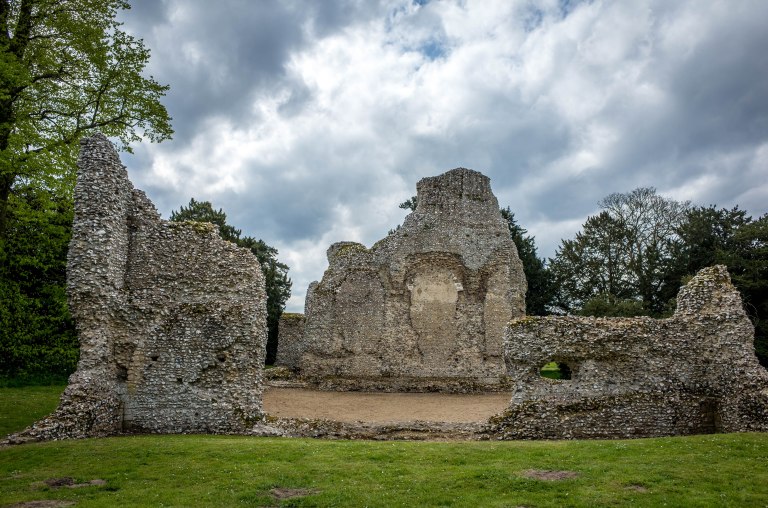
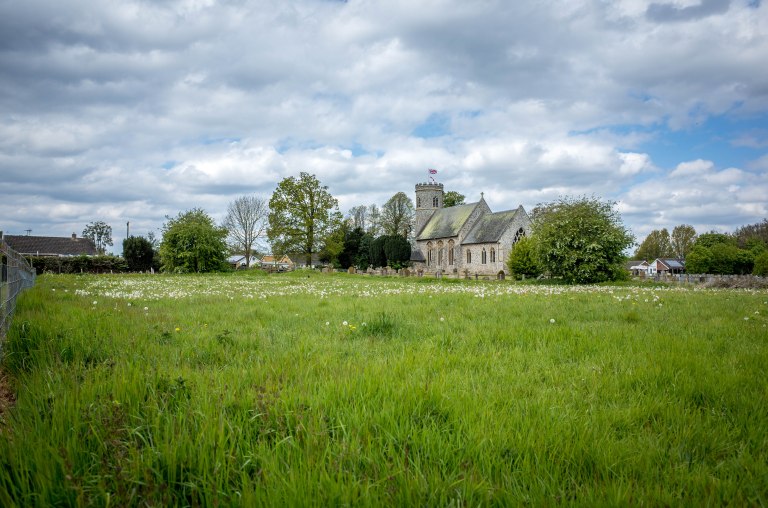
The site is open to visitors for free at any reasonable time during daylight hours. More information about the history of Weeting Castle is available on English Heritage website here.
GRIME’S GRAVES – PREHISTORIC FLINT MINE
If you think that immigration to the UK has been a recent phenomenon, you’re not completely correct. It all started many years ago. What am I saying? Millenia ago! Sometime around 4000 BCE to be precise. Ok, people didn’t leave their countries to live in the UK (as there was no such a thing like “a country” or “the UK”) but they definitely started migrating. And for some reason they chose to leave central Europe in order to inhabit British Isles. They must have not known anything about the English weather… Anyway, these migrants had a massive influence on both society and landscape, leading to the beginning of a new period in British Isles history called the Neolithic. Agriculture and sedentary living kicked off, followed by mass deforestation across the islands (bloody immigrants!). But that’s not what the Neolithic period is primarily known for. It’s the development of new stone tools that brought its fame. The Stone Age! Now, hands up who knew that only one hour away from Cambridge, somewhere in the middle of the Thetford Forest, is a place where our ancestors used to dig out the stone materials for their new tools? This place is called Grime’s Graves and represents the prehistoric flint mines or actually visible remains of 433 mines and pits. With all the dips and humps spreading across an area of nearly 8 hectares, the place looks absolutely surreal. Grime’s Graves were not on our agenda for the day but I’m really glad that we stumbled upon it and decided to descend the 9m ladder to the bottom of Pit as the flint became a common thread to most of the places that we visited that day.
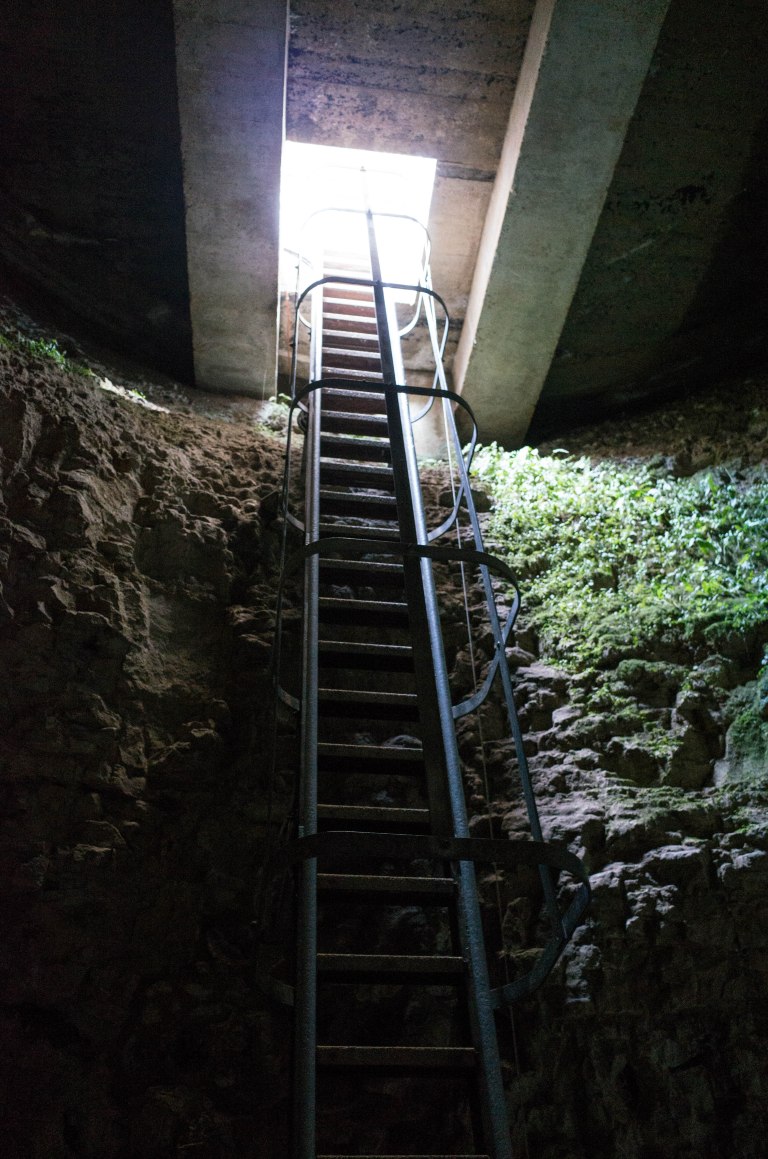
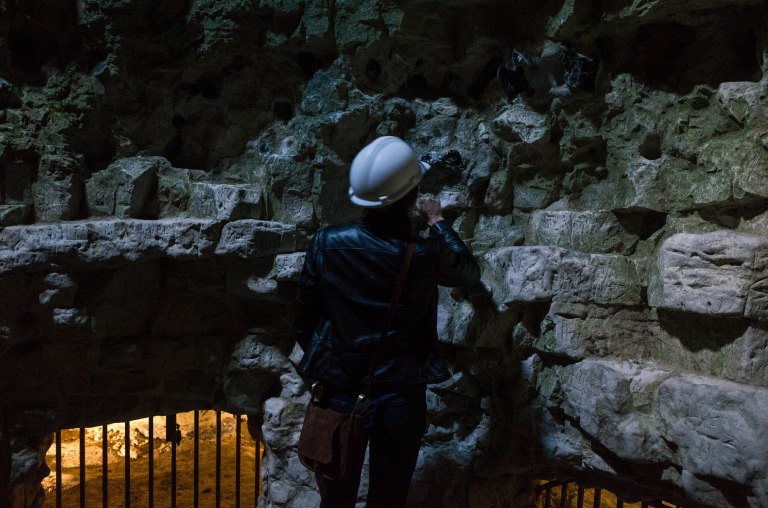
The access to the flint mine is not free but affordable. More information about the history, opening times and prices can (again) be found on English Heritage website here.
WYMONDHAM ABBEY
Straight from the Neolithic, we moved again to the 12th Century when Wymondham Abbey, our next destination, was established. The d’Aubigny family from Normandy initially founded this place in 1107 as a Benedictine monastery, and put a lot of effort into making sure that the church was easily identified as a Norman architecture. It’s either this, or the family had some connections with a trader in Normandy (shipping the stone used to build the church all the way from Caen in Normandy seems a bit excessive!). Once completed, the place grew over the centuries and eventually became an Abbey in 1448. Today Wymondham Abbey is recognised as one of Norfolk’s oldest historic architectural treasures that attracts visitors’ attention, mainly with its tall twin towers. Even though the current church is only a part of the original development, its size is still pretty impressive. I can only imagine how it looked like before King Henry VIII decided to close “badly run” monasteries to seize their wealth – Wymondham Abbey included. Ugh, no one in the past used to care about pretty architecture! Ok, back on the road.
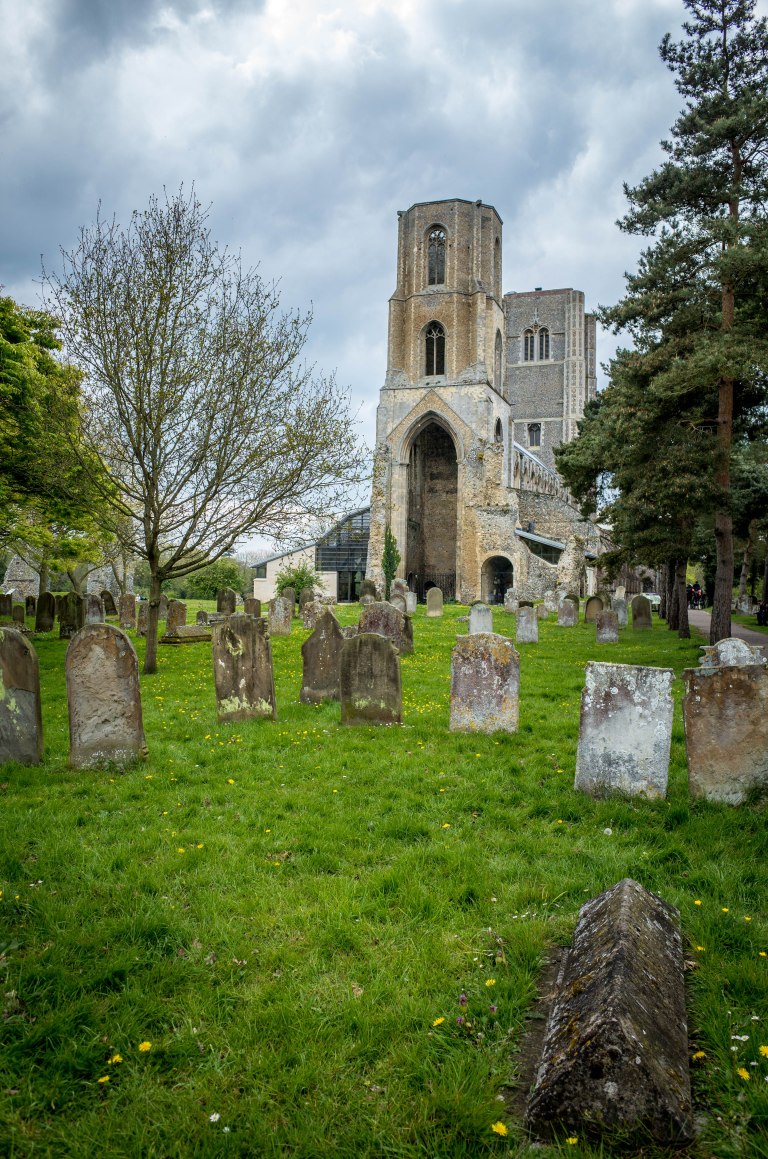
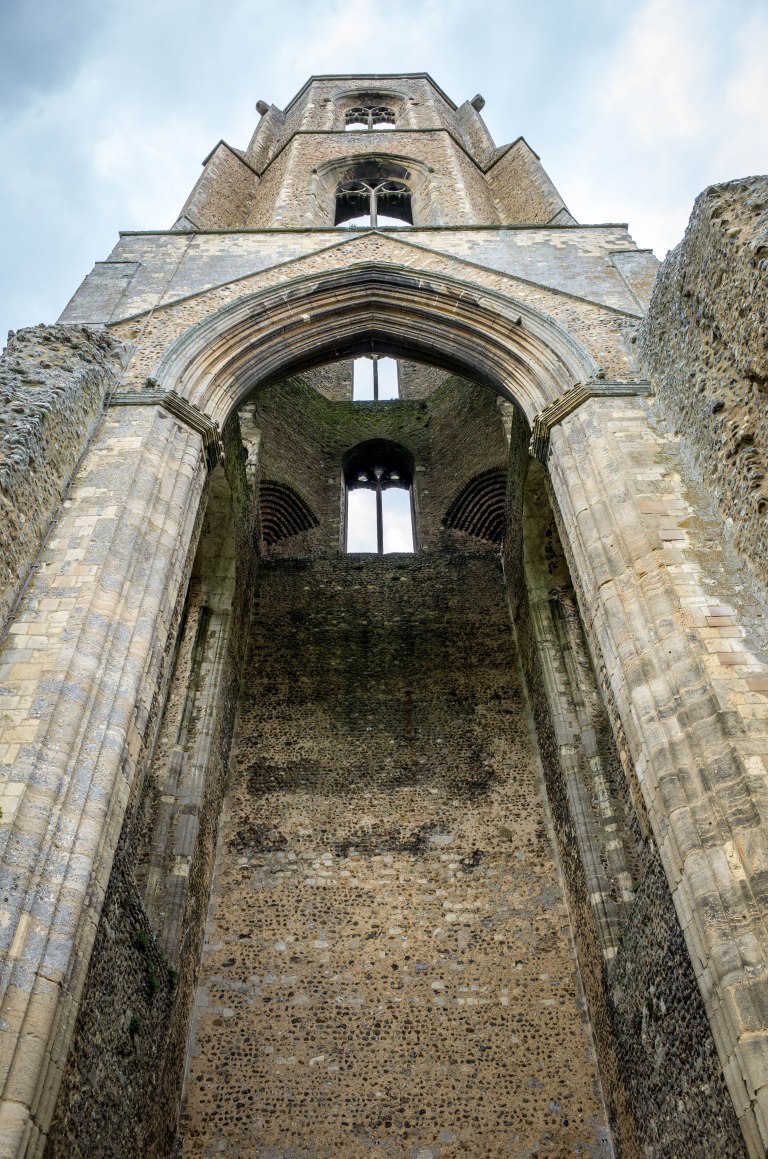
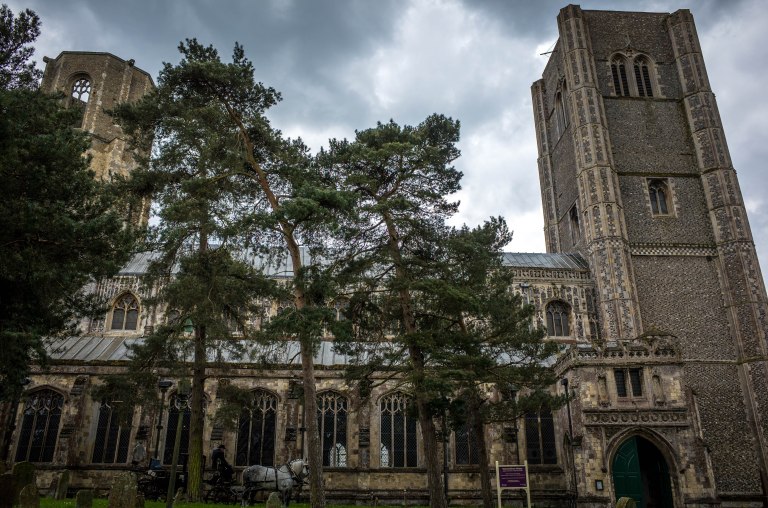
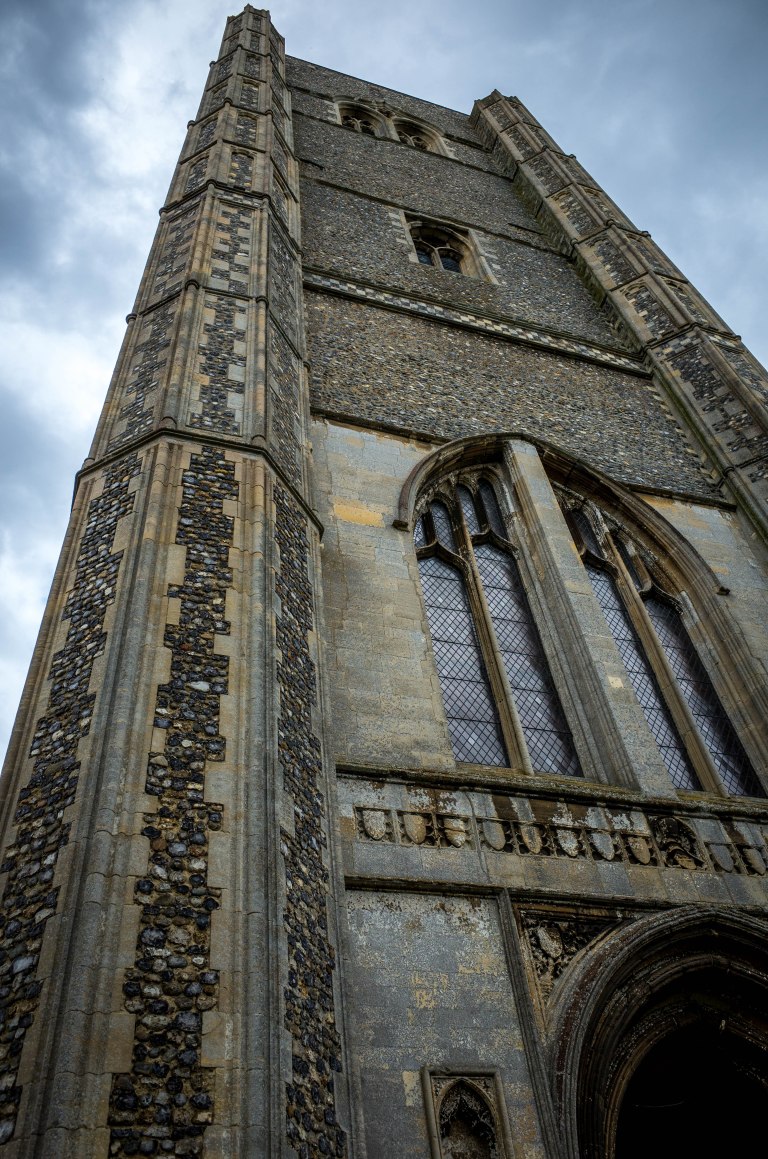
BACONSTHORPE CASTLE
In contrast to the information found on the Internet, we got to Backonsthorpe Castle without any trouble. Lesson – trust your phone and use Google maps. It only took one hour drive from our previous stop to move forward in time to the 15th century. Once we arrived, my interest was immediately piqued . In front of us was the outer gatehouse whose walls were beautifully decorated with, wait for it… flint! We entered the property through that impressive entrance and followed a path that led us to a little bridge which was the last obstacle between us and the actual castle (or ruins if you wish). What happened next? Obviously, we crossed the bridge and a big open space surrounded by a wall appeared to our eyes. If imagination is not your strong point, don’t worry. Boards owned by English Heritage are dotted around the site to really help to visualise how this place could have looked like in the time of its glory. It’s a shame that the glory didn’t last long: the Haydon family who owned the castle had to demolish much of the castle to pay off their debts. Wealth comes and goes, and the story of Baconsthorpe Castle shows very universal truth – we should never take things for granted. Or spend money on a lavish lifestyle. You chose.

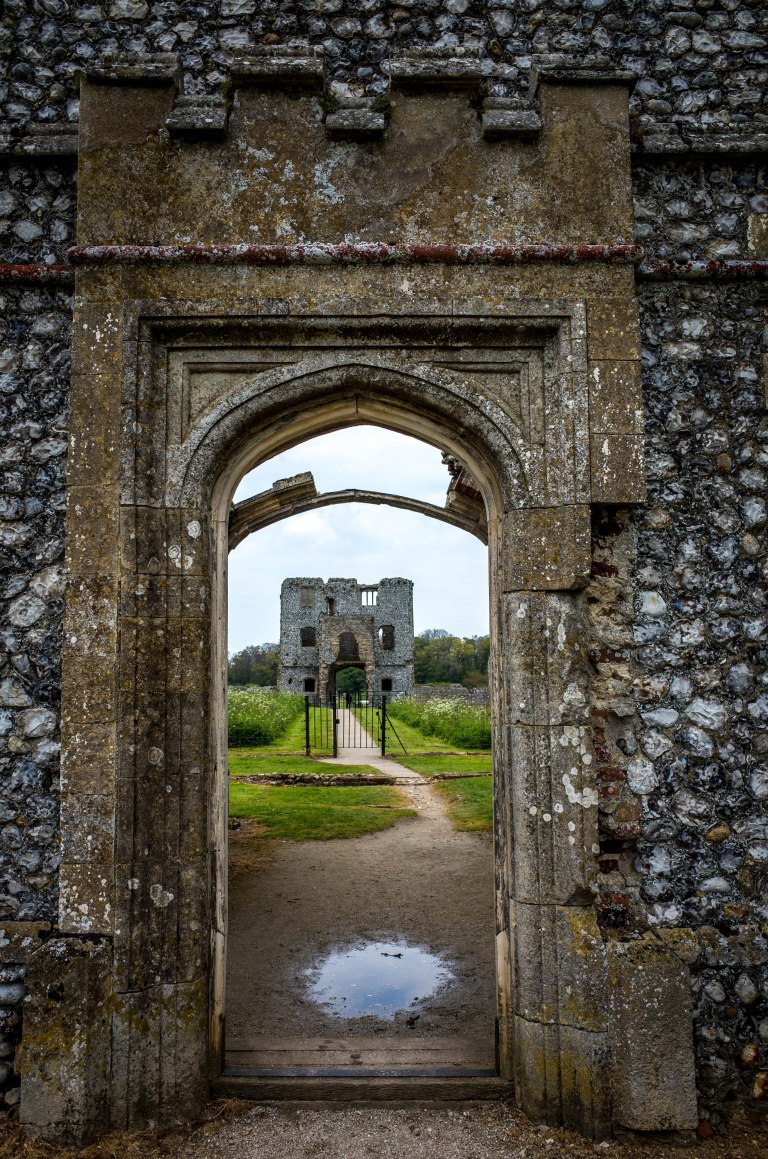
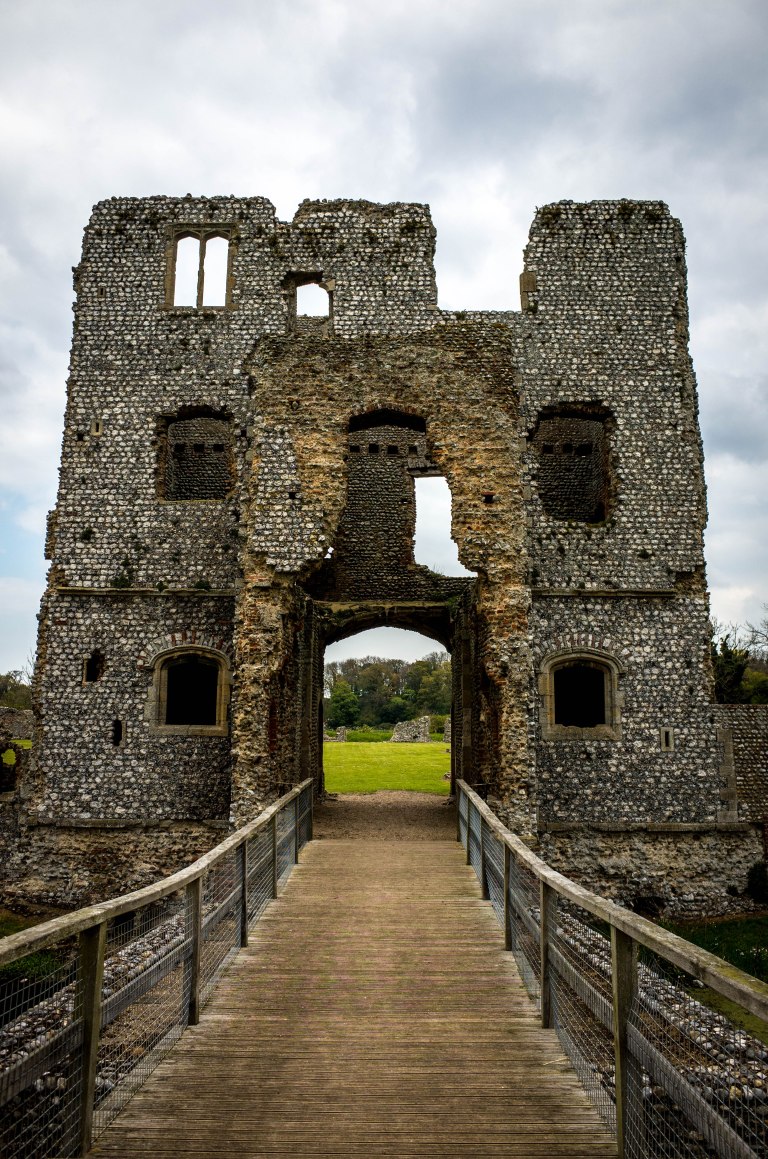
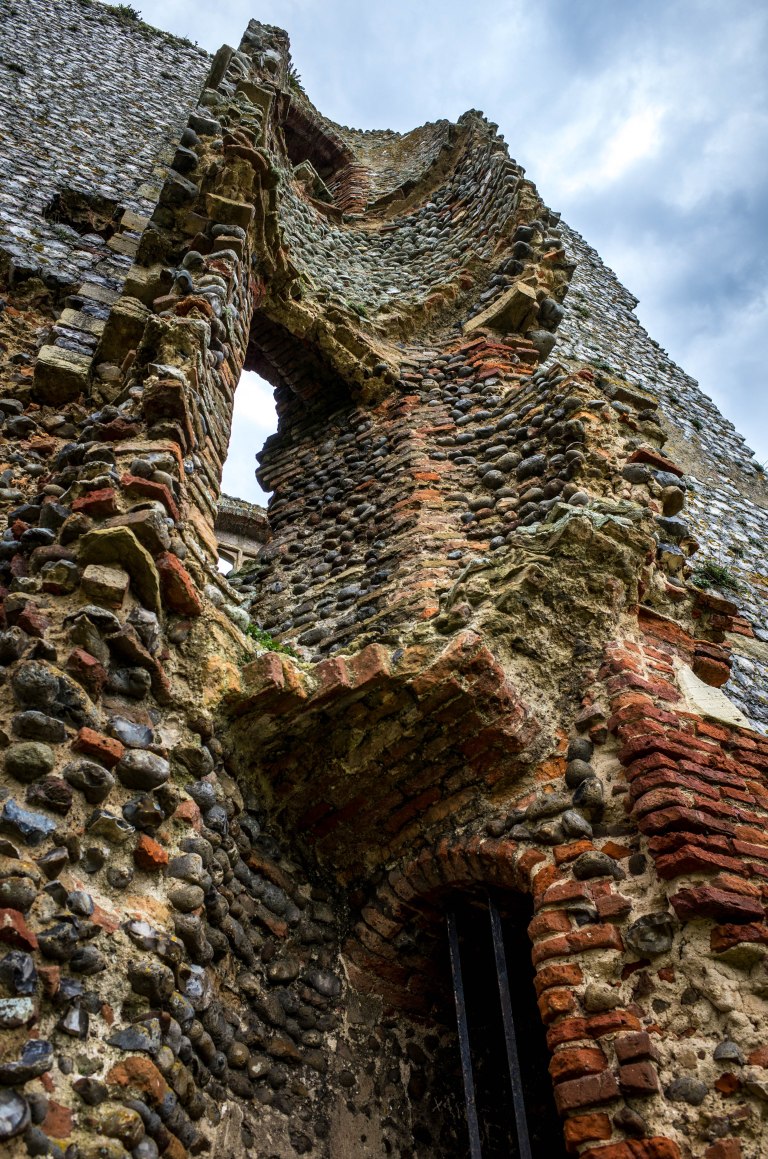
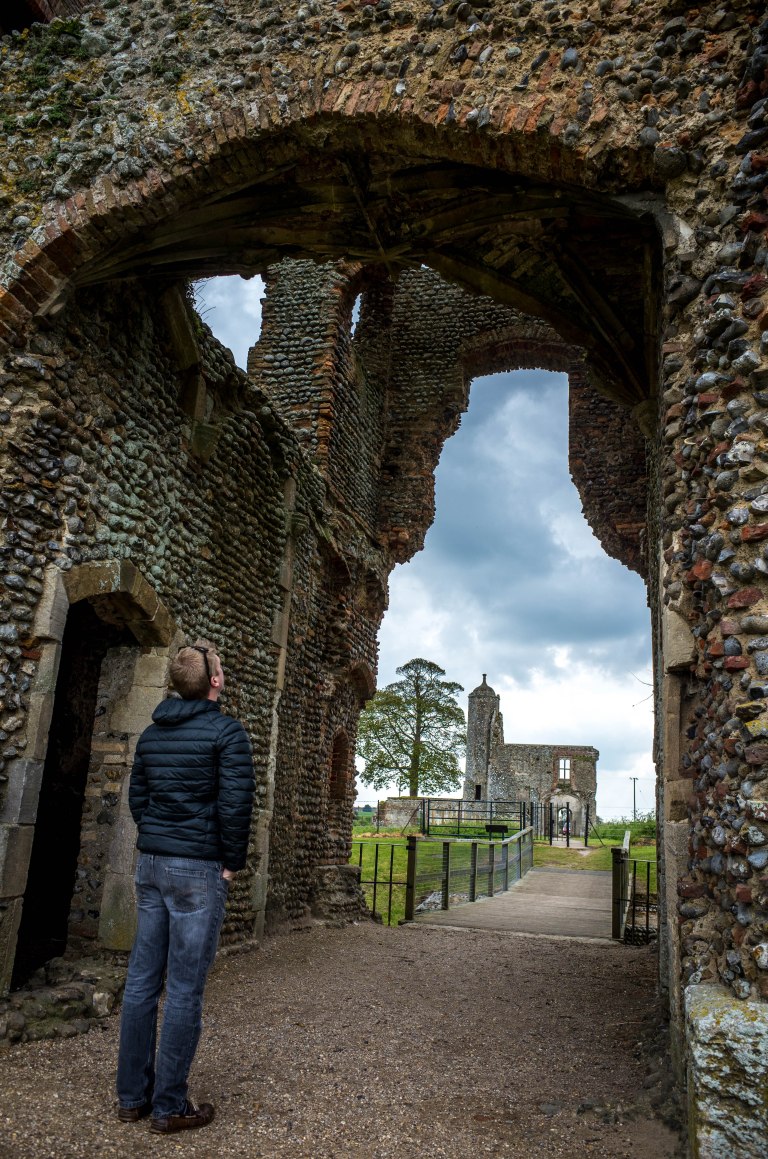
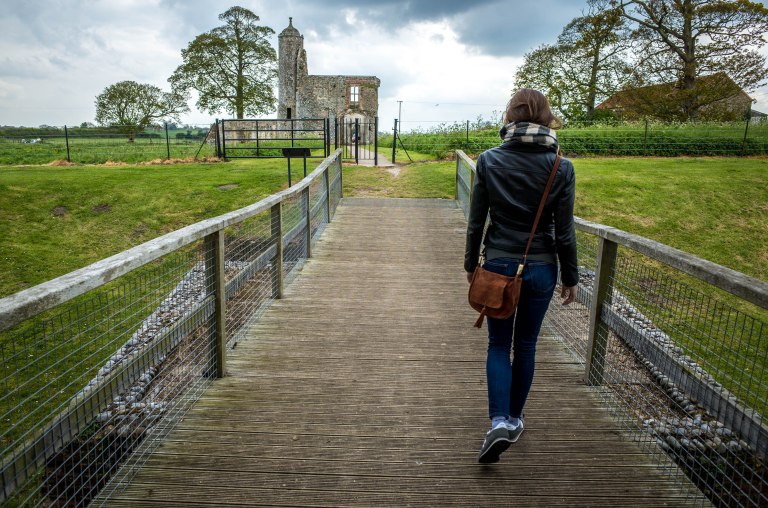
The site is open to visitors for free at any reasonable time during daylight hours. More history and additional information can be found here.
BINHAM PRIORY
Back to 11th century and the Norman conquest of England. That was the time when the construction of Binham priory had started (I wonder what was used as one of the main building materials… oh wait! It was mortared flint rubble. Who would ever have guessed?). Once the place became a home to Benedictine monks, the history brought a lot of scandals and interesting events. One would think that the daily life of monks in the medieval times consisted of prayers, studying and generally leading a quiet, ascetic life. It did but maybe not all of them were as quiet as we might have thought. At least not these particular monks who used to be quite rebellious. The monks often quarrelled with the village and the priors were known to be unscrupulous and irresponsible. Apparently one of them had to flee after investing the Priory’s wealth in alchemy experiments. Naughty, naughty! The history of Binham priory ended up in the same way as the one of Wymondham Abbey when King Henry VIII ordered the Suppression of Monasteries. Again, most of the buildings were dismantled and the stone was sold and reused. So, thanks to King Henry VIII we had nothing left but to walk around the ruins… But hey, not any ruins. Massive ones! I couldn’t believe how much space the monks must have had when they lived there and there were only 14 of them at Binham Priory’s peak. So unfair…
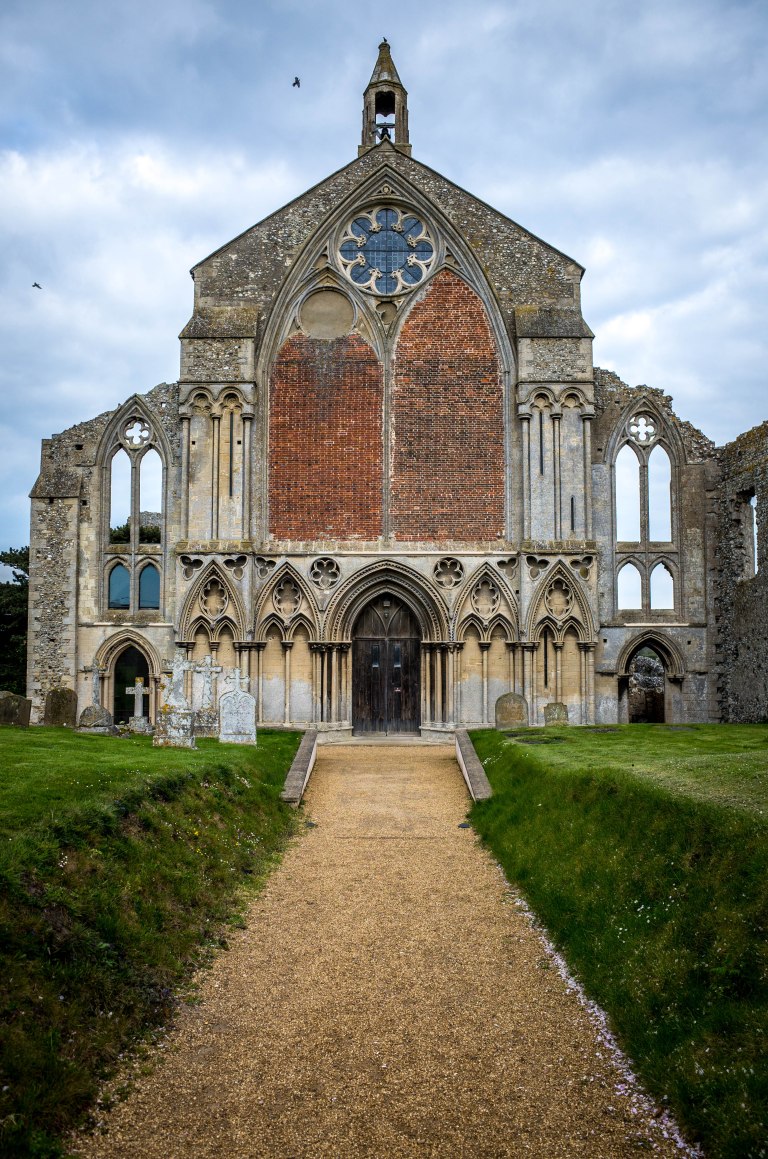
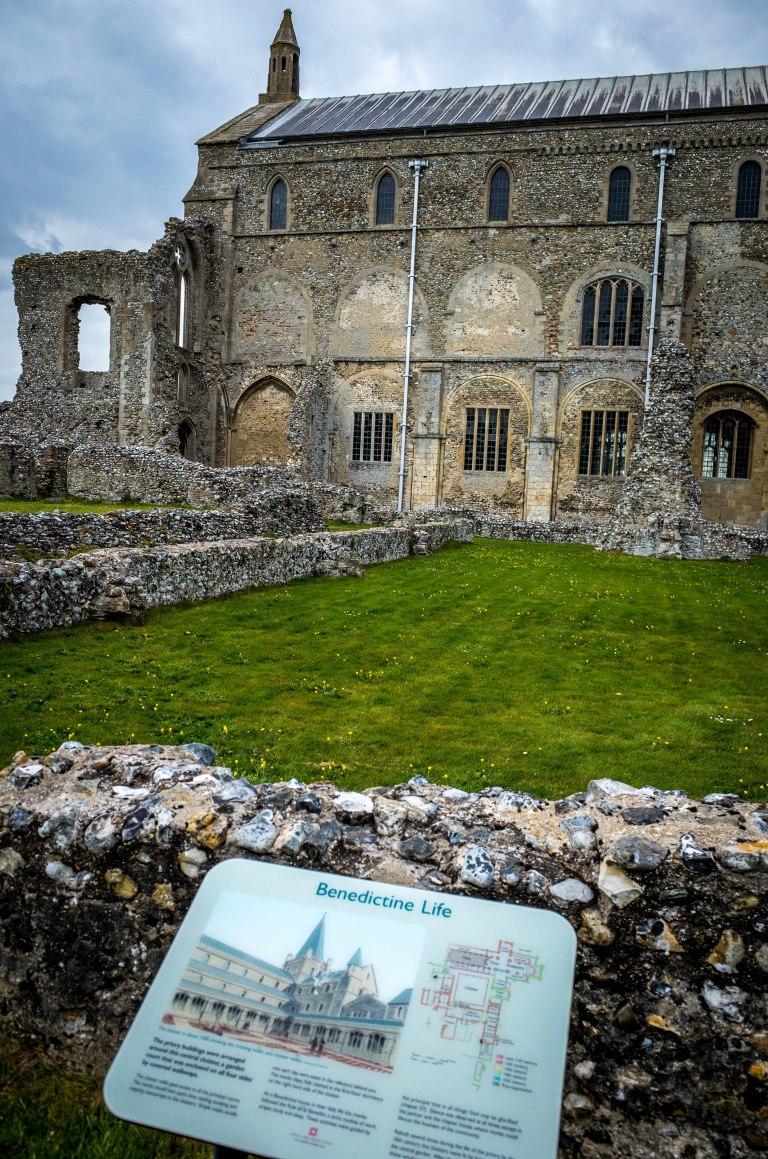
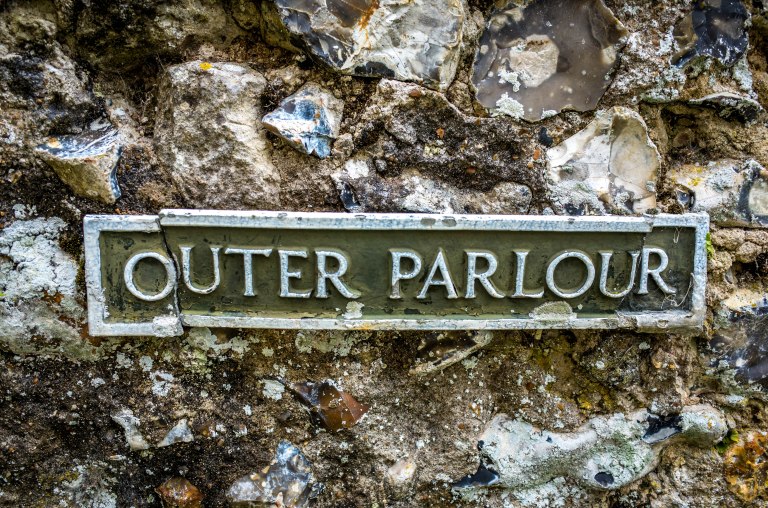
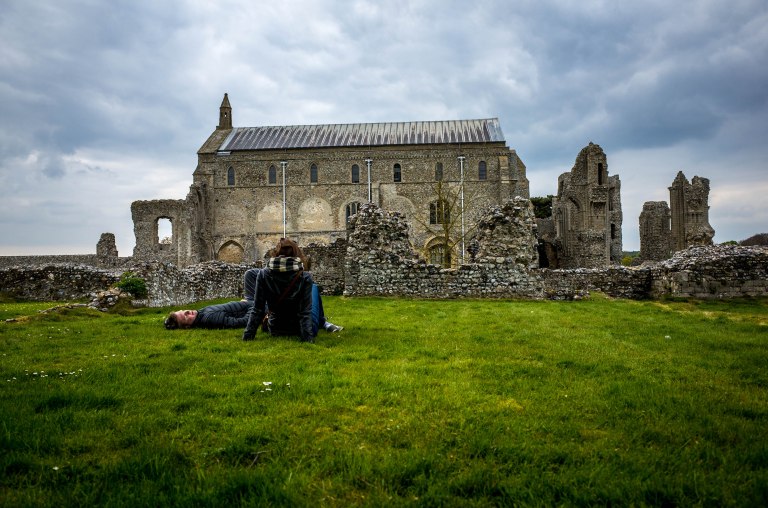
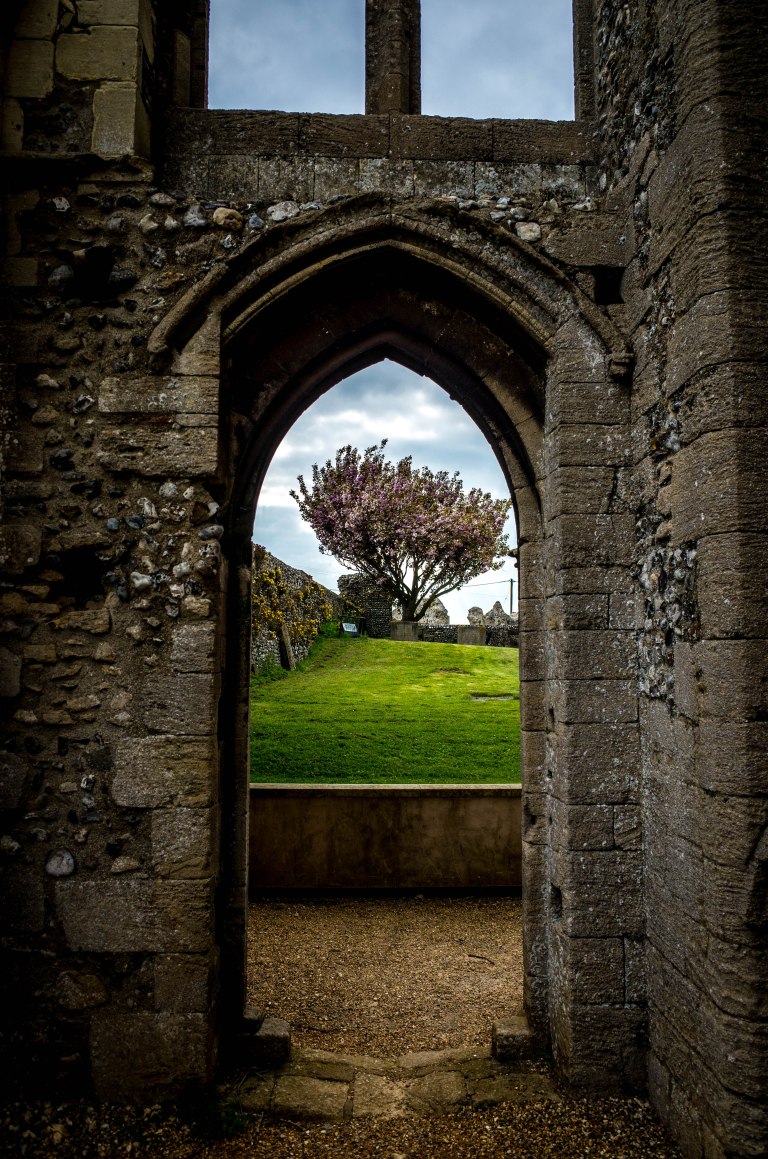

The site is open to visitors for free at any reasonable time during daylight hours. More history and additional information can be found here.
EAST BARSHAM MANOR
We were on the way to our last destination when, out of the corner of my eye, I noticed something beautiful. No, not Jerome. I mean a building. It looked too good to be passed by. We (I) had to stop and check it out. I was just about to enter the property through the main gate when I saw a sign… It was nasty… It said… “No entry”. Damn! I didn’t want to risk an unpleasant meeting with a guard or some angry dogs so I only admired what I could see from the outside. It was fabulous. I googled the place later on and I found out that it’s an example of Tudor architecture, built in or around 1520. Interesting fact: our favourite Henry VIII used to stay there when visiting the nearby Walsingham shrine. Who knew?!

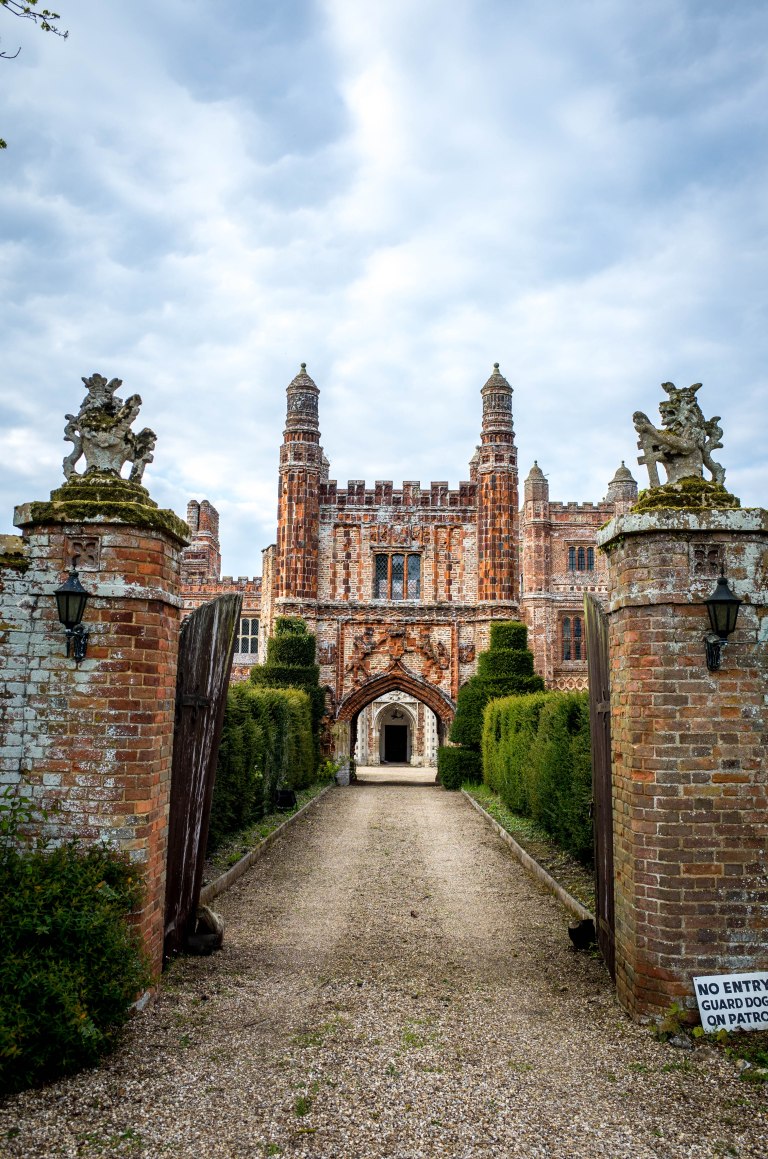
I’m not sure whether the online adverts are still valid but it seems like the property is on the market for a trifle amount – £3,000,000. Just saying…
CASTLE ACRE CASTLE & CASTLE ACRE PRIORY
We finally made it to Castle Acre! I’m sure this is exactly what William I de Warenne exclaimed, when he got to the village in the 11th Century. But let’s be honest, we would never visit Castle Acre if the Norman knight didn’t decide to build there a castle and if his son, William II de Warenne didn’t grant the monks of Cluniac order a new site which, over the years, was transformed into a powerful size Priory. Both of these places are architecturally absorbing and, in my opinion, worth visiting. We started with the Castle. It’s a great example of a “motte and bailey” castle, a type that was introduced to England by the Normans. The term comes from French words for mound and enclosed land and it is said that as many as 1000 Motte and Bailey Castles were built in England by the Normans. 1000! How come it was the first one that I’ve seen so far?! We moved to our last historical site. The Castle Acre Priory was like a cherry on the cake and believe me, I had no idea it would be. It just happened that it was the most beautiful, enchanting and fascinating place I saw during our trip. The ruins were literally telling the history of the monks walking around, praying and growing their herbs. I guess, at this point, I don’t need to say what happened to the Priory and why there are only the ruins that are left…
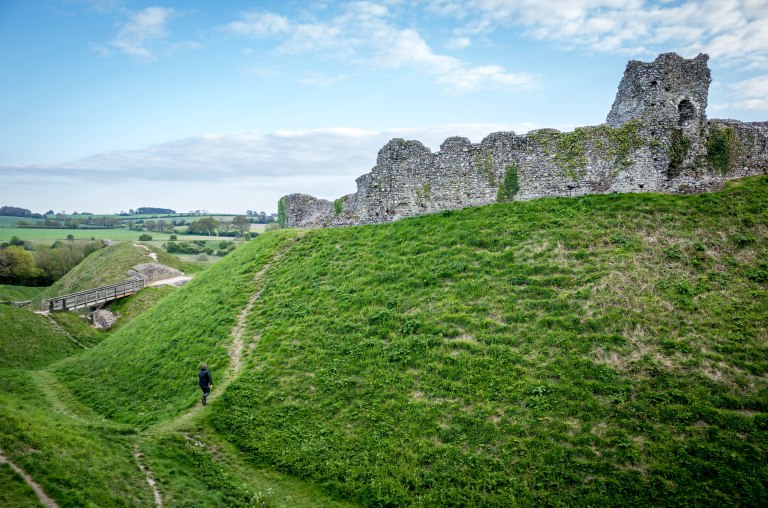
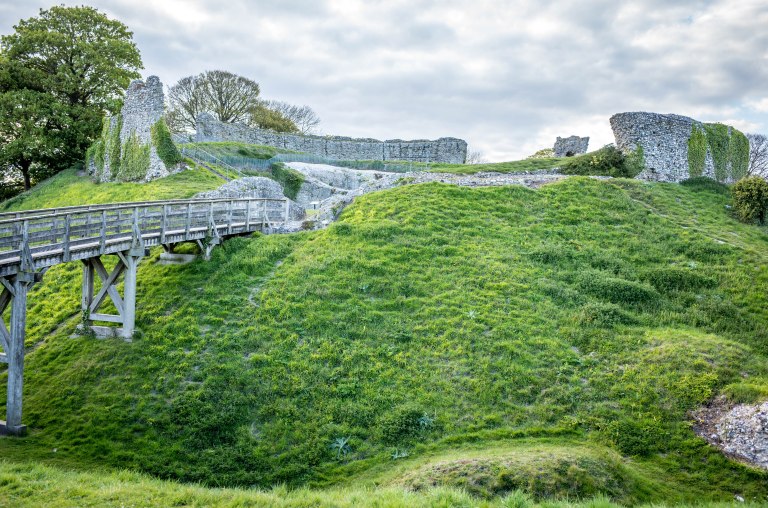
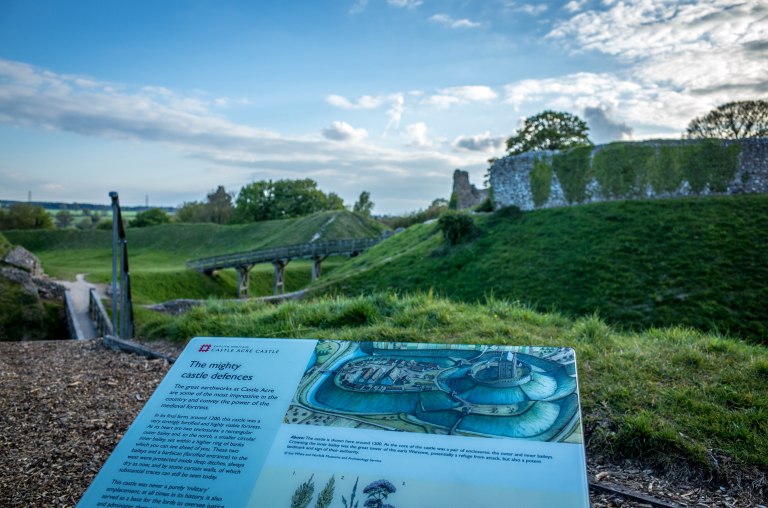
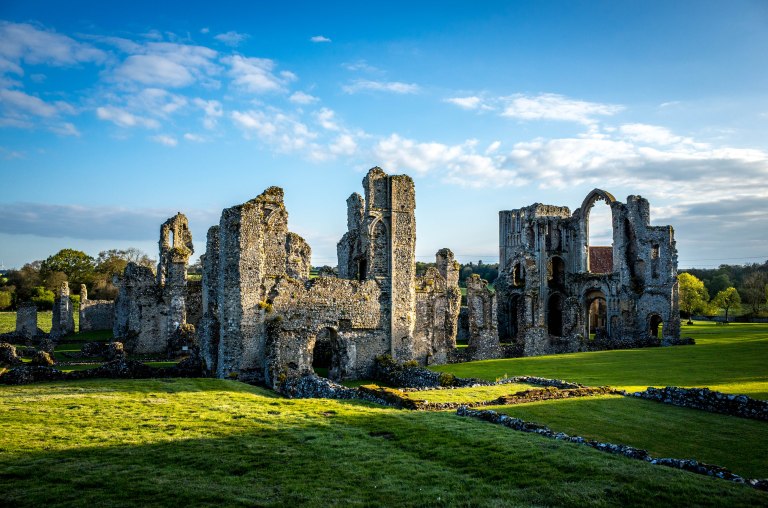
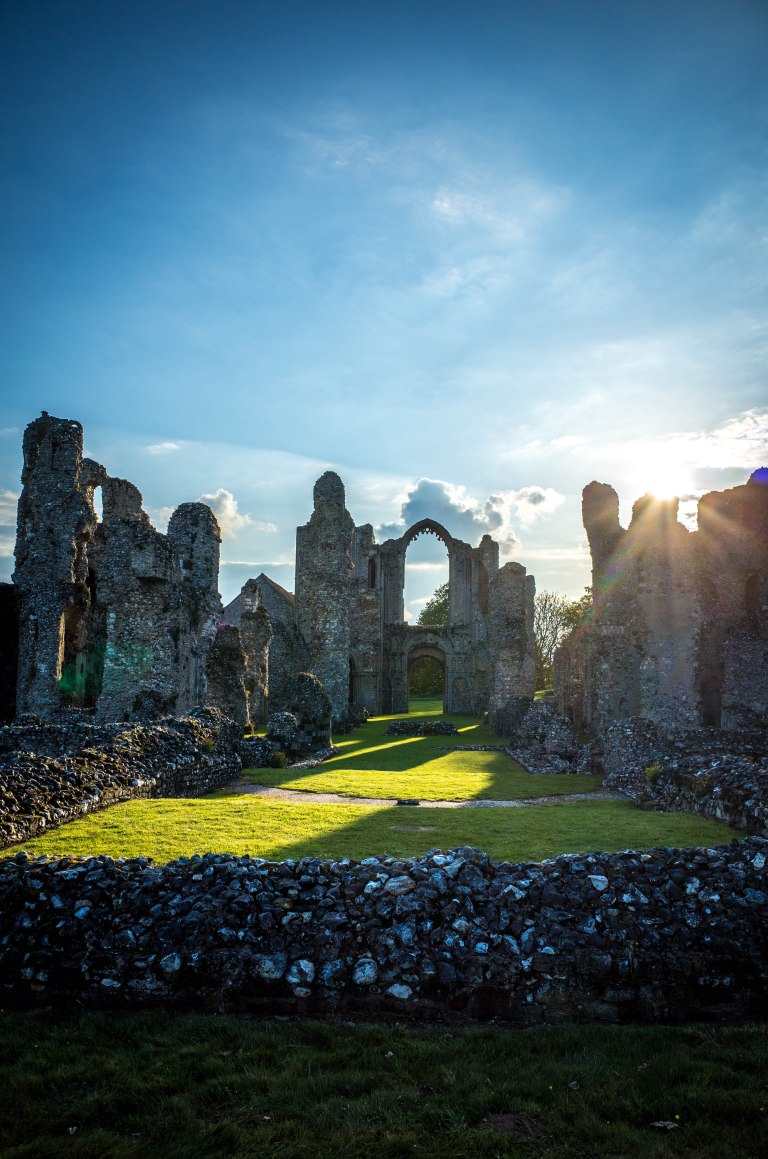
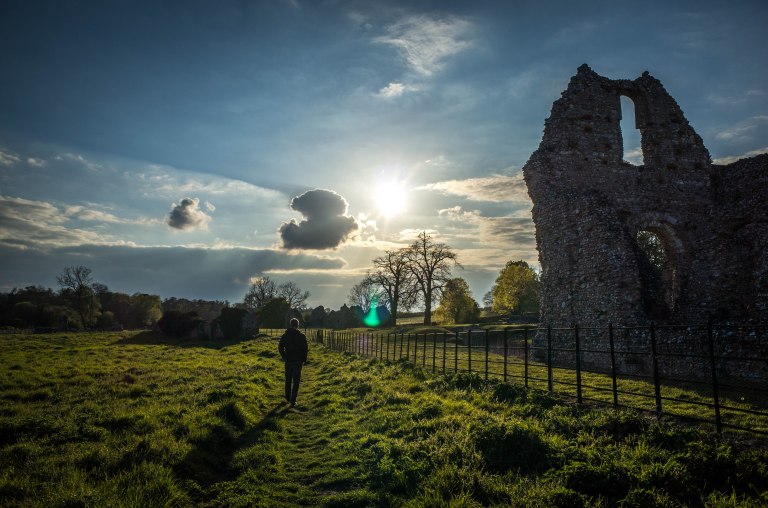
The Castle is open to visitors for free at any reasonable time during daylight hours. More history and additional information can be found here.
The Priory is not free. More information about the history, opening times and prices can be found here.
Now, believe it or not, but we actually didn’t see all of the places that I marked on the map. Some required quite a significant detour and some were closed (the ones marked with red on the map). I have no regrets though as we’ve seen enough and my sightseeing hunger was definitely satisfied. It was a great, intellectually stimulating little getaway but after a full day in the car I was glad that there was some hill walking ahead of us.
Peak District
Less text. The pictures should tell all that’s needed to be told.
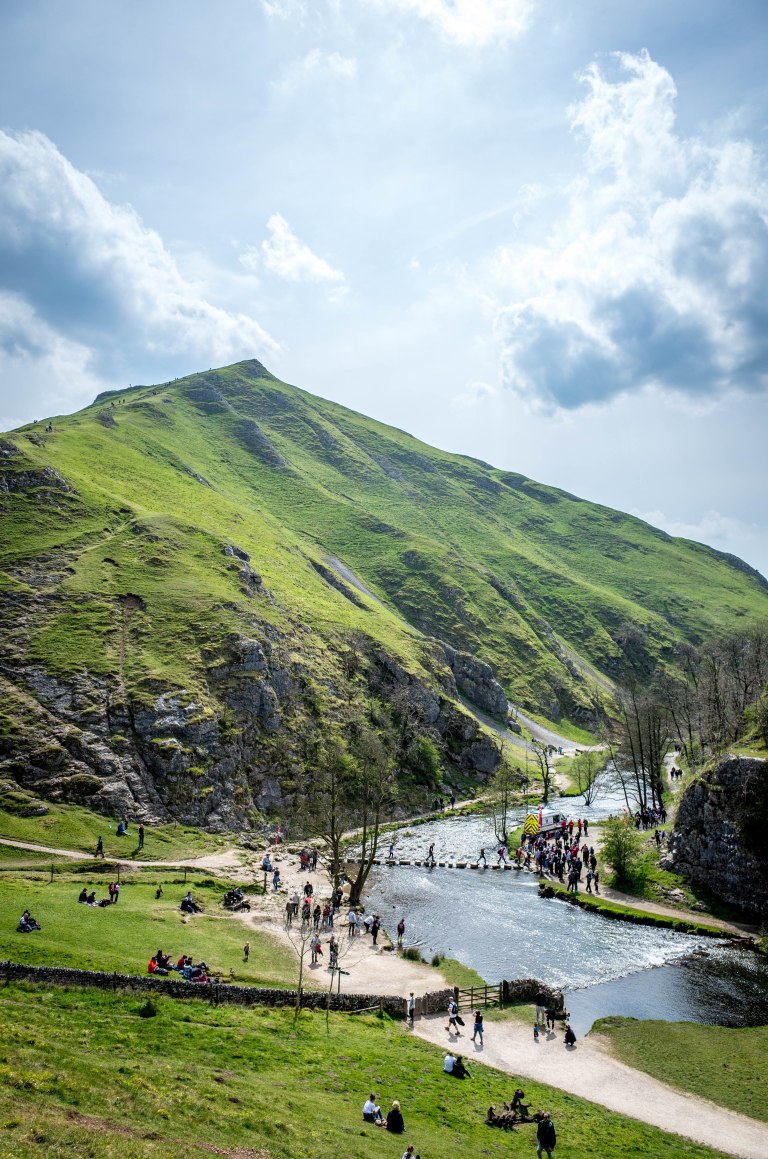
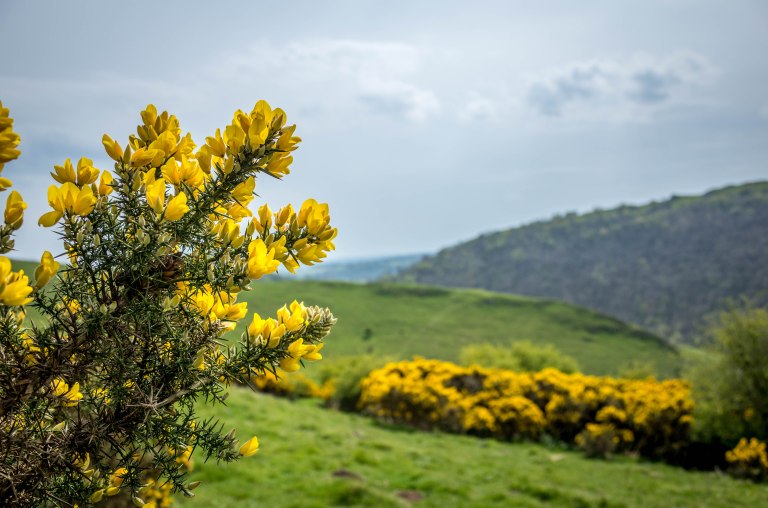
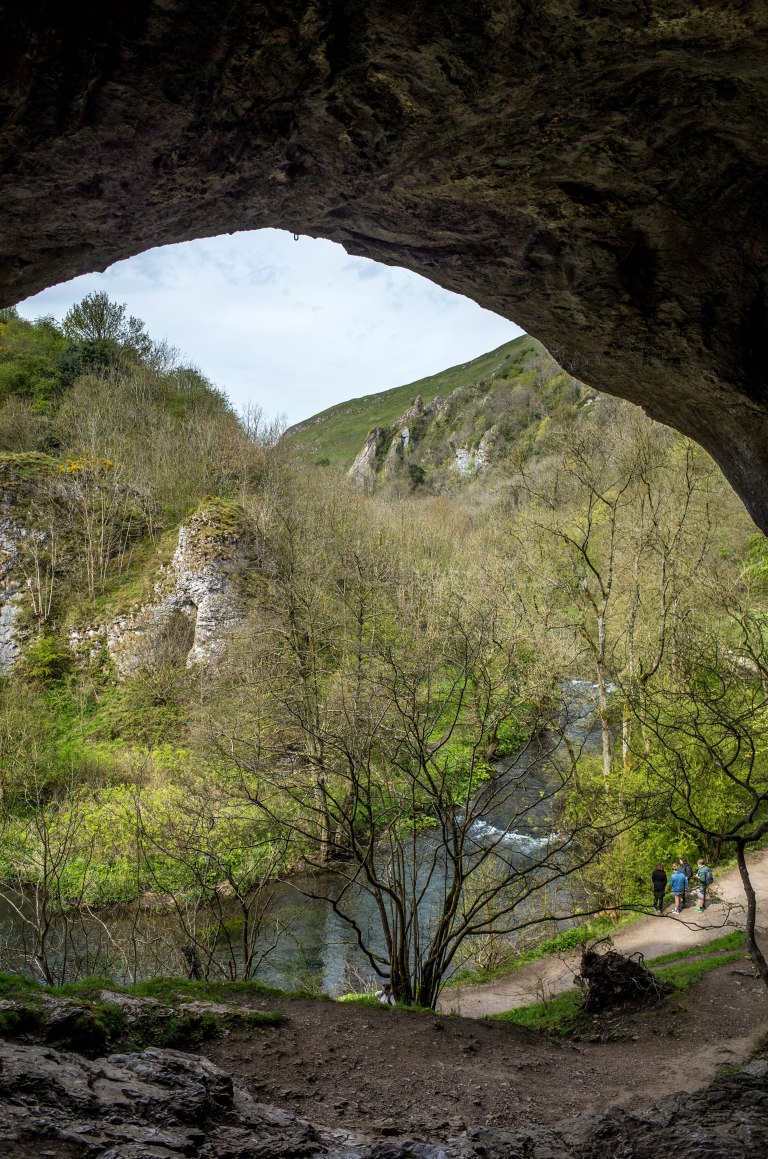
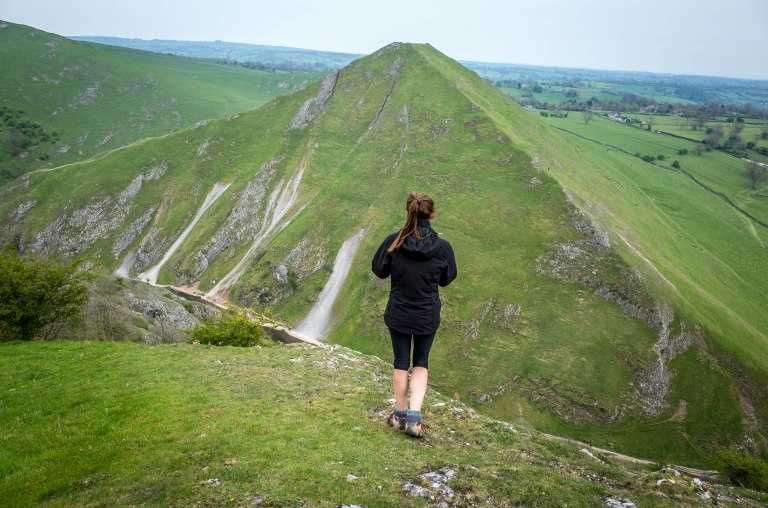
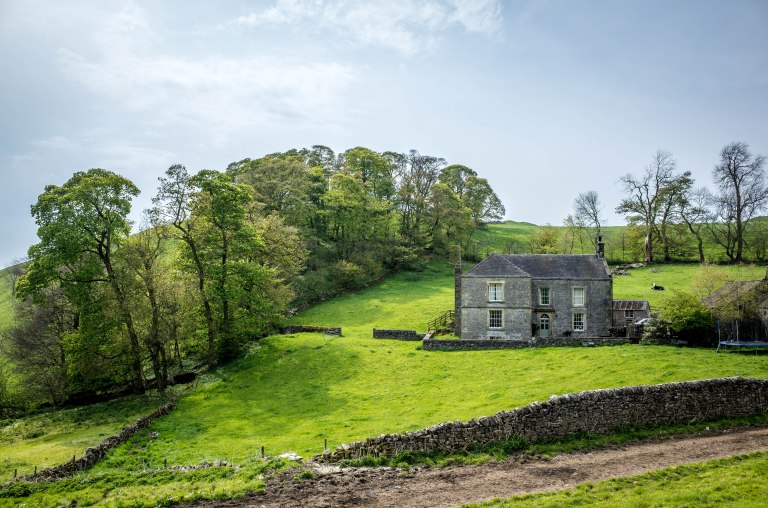

pięknie! Uwielbiam angielskie i szkockie zamkowe klimaty… może coś na jesień??… :>
LikeLiked by 1 person
My to mamy chyba jednak coś wspólnego 😉 Jesień i zamki? Będzie klimat! Jestem na tak!
LikeLike